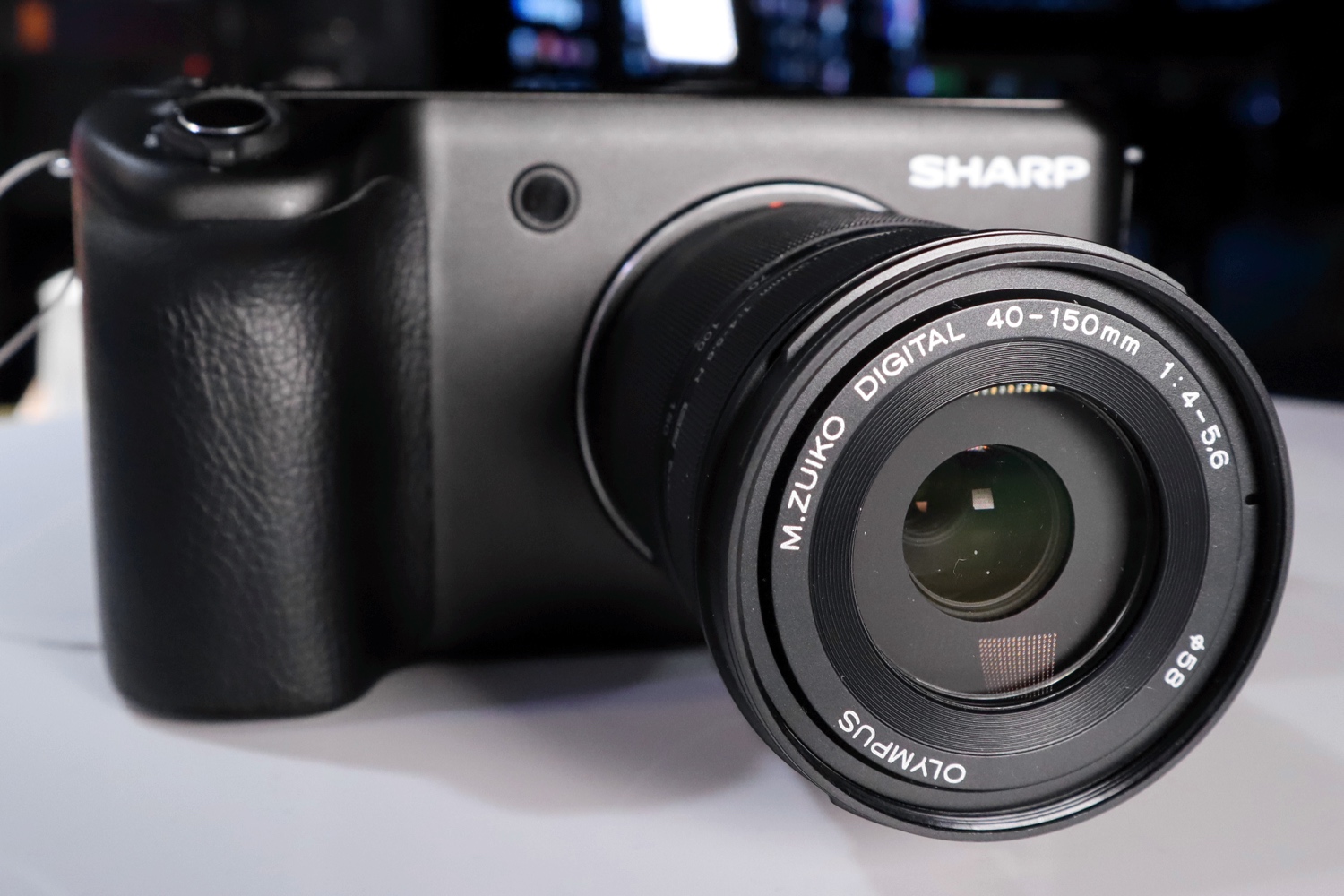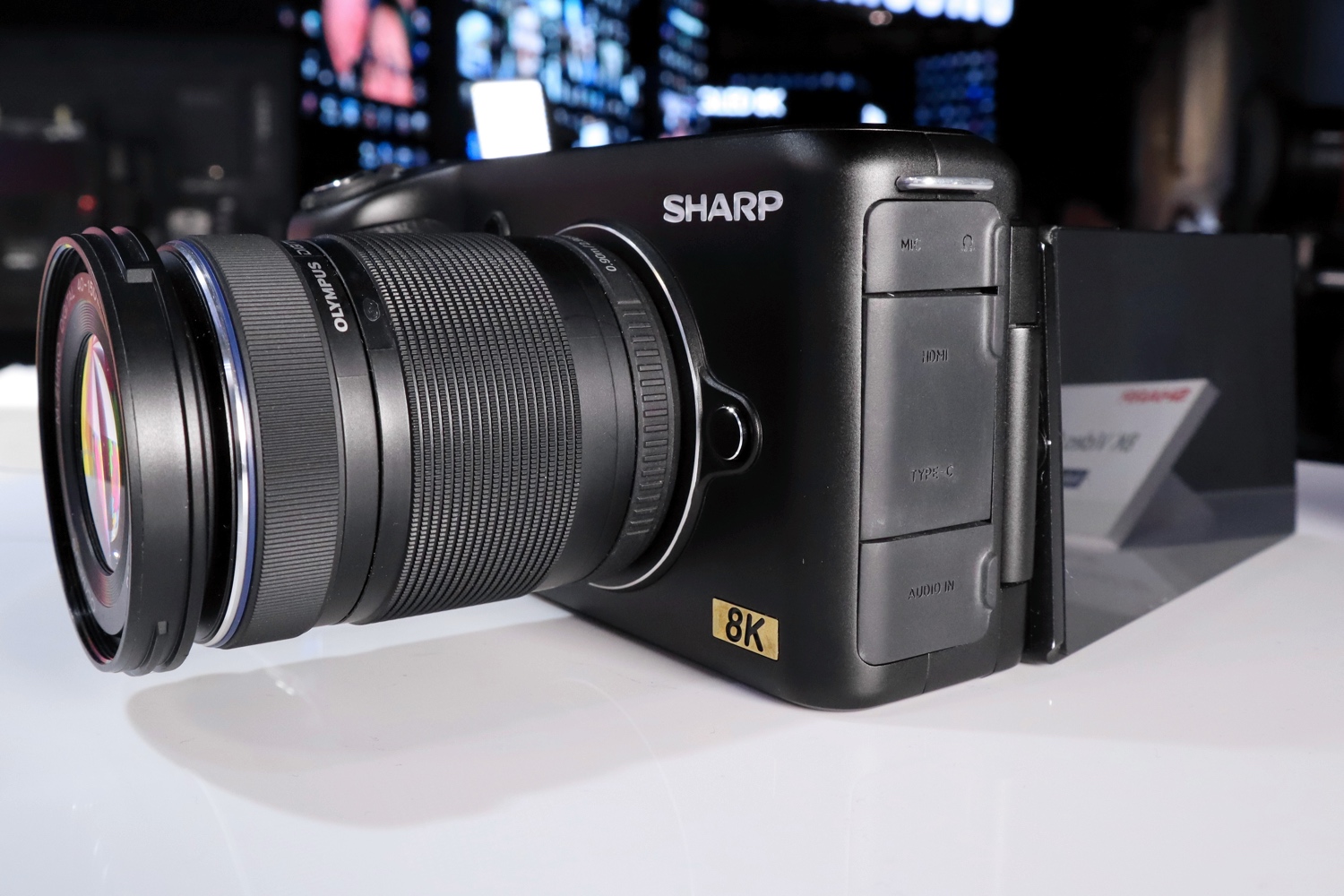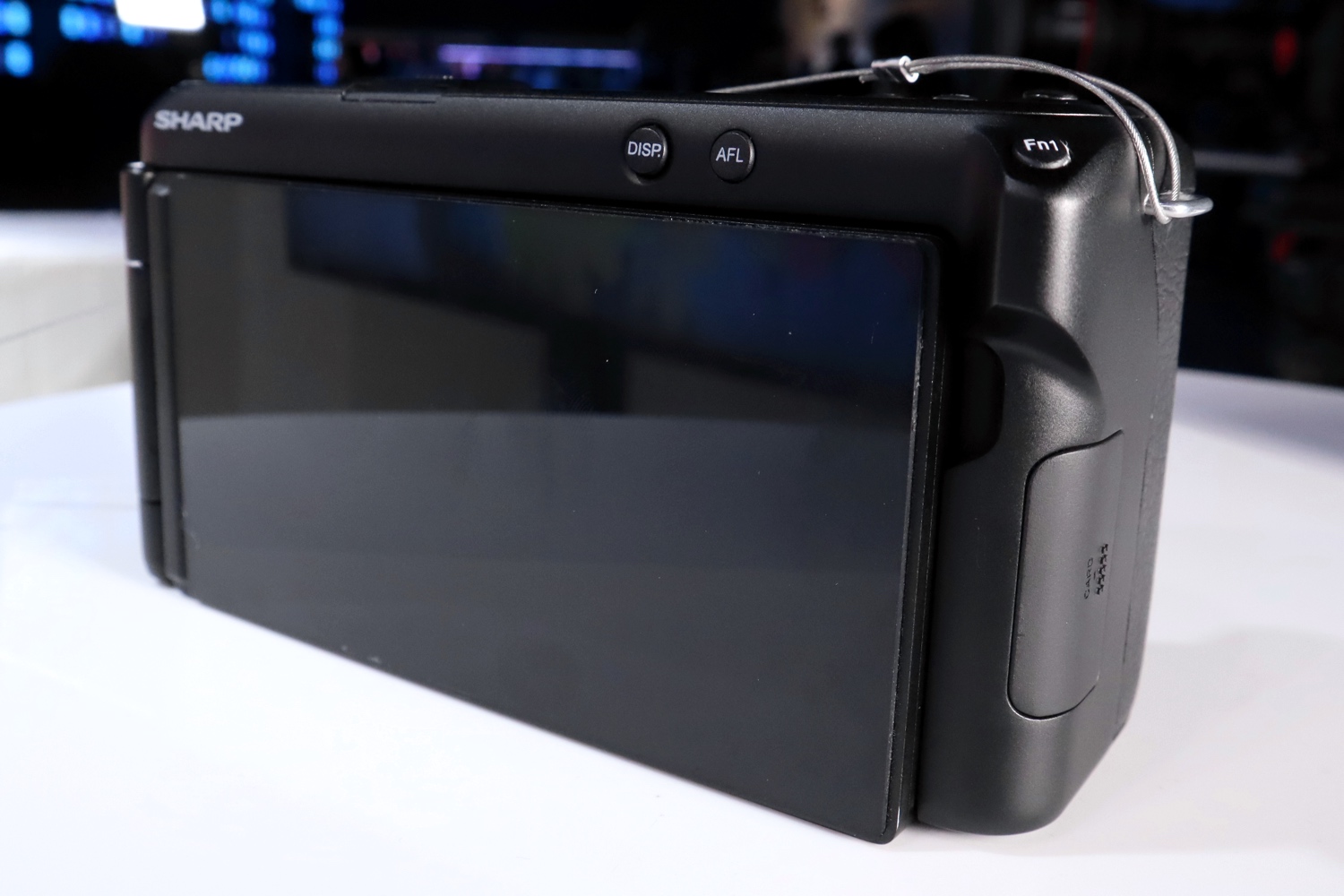The 8K prosumer camera is coming — and it’s coming from a tech company that hasn’t specialized in consumer cameras in a long time. Sharp, a company better known for TVs, displays, and electronics, is currently displaying a prototype 8K prosumer camera at CES 2019 — which could be one of the first 8K cameras, with a prosumer price under $5,000.
More CES 2019 coverage
- Eye AF is coming to the Nikon Z6 and Z7, along with CFexpress compatibility
- New Kodak-branded instant digital cameras are designed for nostalgia
- Panasonic’s full-frame cameras will have multi-shot high-resolution modes
The prototype camera doesn’t yet have a full name or specifications, though those details are expected during the National Association of Broadcasters (NAB) conference in April. The camera that’s on display at CES uses an Olympus lens, as it’s based on a Micro Four Thirds system. We don’t know much about the sensor other than it’s a Shark 8K CMOS. Sharp also told Digital Trends that it’s also working to include image stabilization.
Sharp says the camera can shoot 8K at 30 frames per second, but it could possibly reach 60 fps. The 10-bit camera also uses the H.265 codec and has an SD card slot, and HDMI and USB Type-C connections, along with headphone, microphone, and mini XLR ports. It will have autofocus, but we still don’t know much else, like ISO range.

The design feels equal parts familiar and odd. There’s a selection of function buttons and the shape of a traditional mirrorless camera. But the 5-inch screen at the back is larger than most, physical controls are minimal, and there’s no viewfinder. There’s a hot shoe on top, however. The unit at CES is a non-working reference sample, but it gave us an idea of look and feel. Yes, it’s large for a camera, but it’s compact considering it’s an 8K camera. The size is reminiscent of cameras like the Blackmagic Design Pocket 4K or Hasselblad’s X1D mirrorless medium-format cameras.

The unnamed camera isn’t the first to hit 8K resolution, but Sharp is suggesting a lower price point than the high-end 8K options offered by cinema-grade companies like Red and Blackmagic. Red’s DSMC2 Helium 8K S35, for example, lists for $24,500 — and that’s just the “brain” of the cinema-grade camera.
Sharp, a company with a current product lineup that includes TVs and displays, appliances, and business products, hasn’t launched a camera in the consumer market for years (check out this 2002 4-megapixel digital camera). But, the 8K camera fits in with the company’s 8K displays at CES, and Sharp’s 8K Global Ecosystem strategy. Without widely available 8K content in North America, selling 8K displays in the U.S. is tough — but convincing creators to use pricier cameras when the displays aren’t widely used is a similar conundrum. Perhaps by launching a (more) affordable 8K camera, the company is hoping to boost the rest of its 8K space as well. It’s also clear that Sharp is positioning the camera for regions that will be 8K ready, like Japan where NHK is expected to broadcast the Tokyo Olympics in 2019 in 8K.
As a prototype camera, the design, specs, and price point could still change (Sharp told Digital Trends that it’s trying to hit the $3,000 mark, although $5,000 is what they’re suggesting now). Sharp suggests that additional information and details will be available during NAB 2019, a trade show focusing on video and broadcast, later this year.
[This article was originally published on January 9. It was updated on January 10 to include new features and pricing information, as well as new photos.]
Editors' Recommendations
- Samsung QN900D 8K TV first look: fully loaded flagship
- Denon AVR-X6800H: 8K everywhere and Dirac Live compatibility
- Is 8K TV dying? It’s not looking good at CES 2023
- Marantz’s new Cinema series AV receivers are a stylish way to go 8K
- Denon updates 8K AV receivers with prices starting at $399








